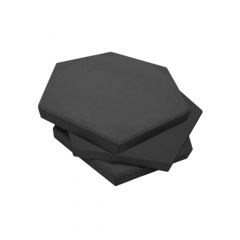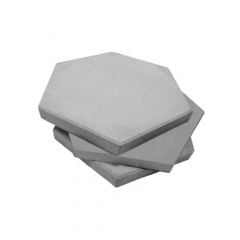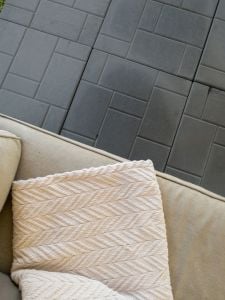Affordable and convenient, paving is a great way to landscape your yard, patio or walkway. Hardware stores carry a range of styles, but it’s important to make a choice that suits your intended use. So, what do you have in mind?
Plan your project
Although pavers can withstand extreme climate fluctuations without damage, there are certain key installation rules to follow so they remain stable.
Rules
Before you start, check with your municipality to be sure the work you intend to carry out is compliant.
Design
The possibilities abound. Ideally, the pavers you choose should suit their intended use. There are many factors to consider: the weight they need to support, possible impacts, freezing and thawing, de-icing products (salt and other products) and the overall environment.
Budget
Although the price of pavers can vary widely, products available in hardware stores tend to fall within a similar range. Pay attention to the composition, shape, look, quality, thickness, size and finish..
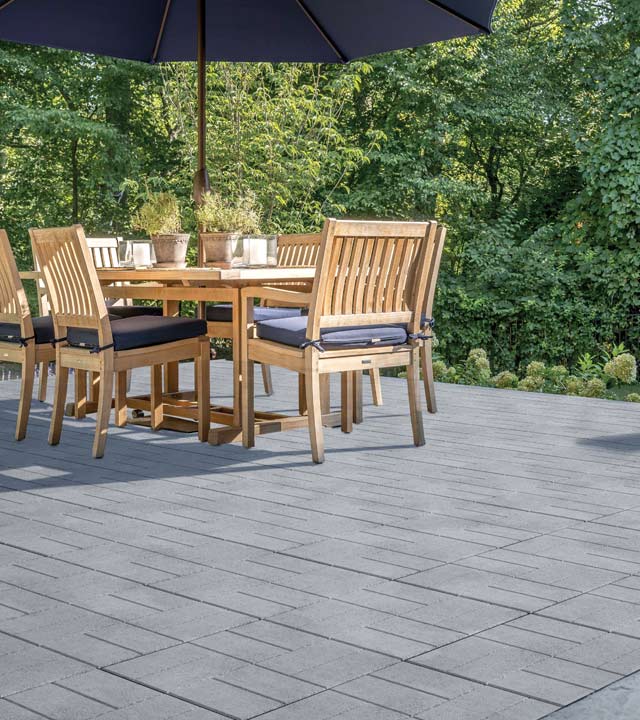

Types of slabs sold in hardware stores
All pavers have their own installation guidelines, so be sure to use the correct method. For a durable and easy-to-maintain paved surface, be sure to plan every step carefully.
Slabs
Uses
For a patio, walkway, driveway, play area or even a well-planned parking lot.
Characteristics
Slabs, available in white or grey, are timeless and affordable. White concrete slabs are a great choice, primarily because they are versatile and easy to replace when cracked.
Smooth pavers
Uses
For a patio, walkway, driveway or play area.
Characteristics
Given their simple shape, this type of stone is easy to install.
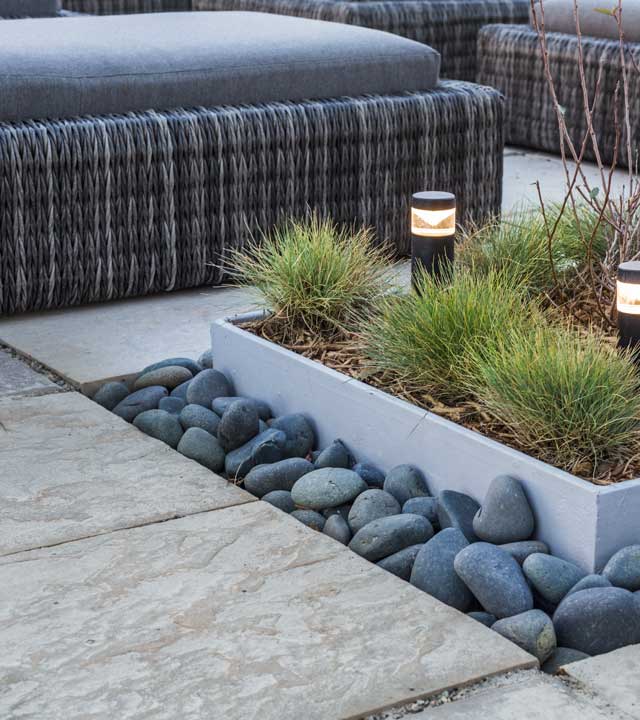

Double pavers
Uses
For driveways, walkways, narrow paths or garden spaces.
Characteristics
These are effective to cover an area quickly, but not recommended for outdoor dining spaces. The gaps in the centre do not provide support for furniture legs.
Irregular pavers
Uses
For walkways, narrow paths, garden spaces or Japanese garden paths.
Characteristics
Available in a range of colours, these give your space a unique look.
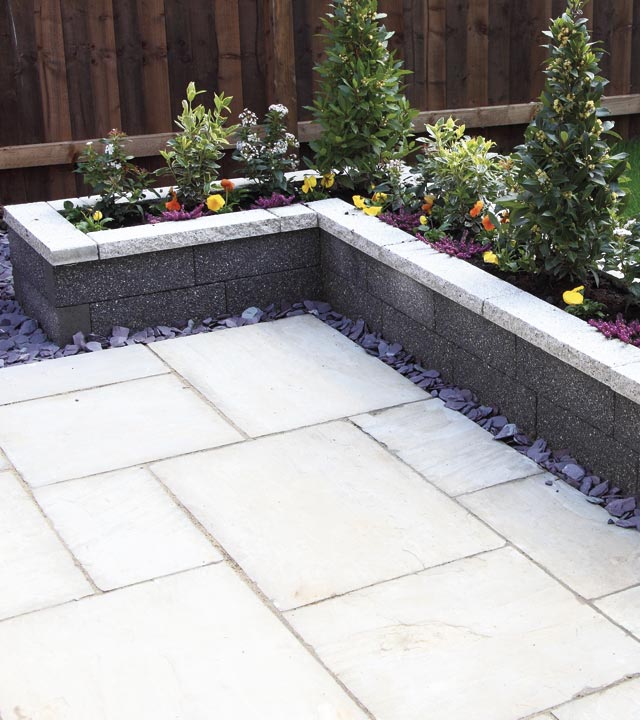

How to install pavers
Preparing the soil
Proper soil preparation is key. Every layer must be well compacted to prevent sinking. Proper drainage is also crucial.
Key steps
- Assess the general condition of your property: wet and dry areas, soil type (sand or clay), layout of trees, shrubs, flowers, etc.
- Mark the area to be paved.
- Excavate the area. Plan for a minimum excavation depth of 12 inches.
- Make sure there are no obstacles, roots or plants. Next, compact the entire area.
- Ensure effective water drainage. If the area to be paved is near the house, ensure the flow moves away by creating a slight slope (2–5%) and plan to install a geotextile fabric. Geotextile fabric ensures proper water drainage and prevents the soil from contaminating the foundation.
- Spread layers of crushed stone (0–¾ in.) to create a 4-inch paver base and compact between each layer.
- Do not walk on the surface.
- Lay pavers or slabs on the bed according to your installation plan. Make sure everything is straight and level.
- Cover the area with a bed of sand or stone dust (granular material). Ensure that everything is still level and be sure to have the right tools on hand in case you need to make any cuts.
- Finish by filling the joints with polymeric sand. To ensure pavers remain in place and joints are completely filled, tamp the surface down with the vibrating plate compactor. Add sand if you see any gaps. Compact again. Gently wet the area and allow to dry (24 hours).
Note : With this type of sand, it’s important to follow the steps exactly.
Euro Base - Make it easy to install patio tiles
Want to install in fewer steps? Rinox offers an excellent alternative product, Euro Base. These simple panels are laid down beneath the slabs, making your life so much easier by saving you from excavating, laying down the geotextile fabric, stone dust, etc.
Simply excavate a half an inch down to clear the surface, spread sand and compact. Then place the Euro Base panels. Next, lay your slabs directly onto the panels and you’re done!
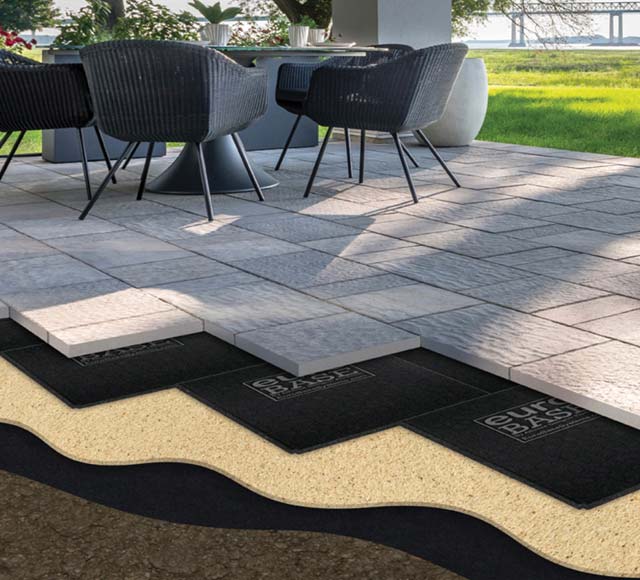

Good to know
Is sealing necessary?
Sealing pavers is an effective way to prevent stains. Sealants also prevent discoloration caused by the sun’s rays. Sealing is optional, however, as pavers are made to last.
To avoid
Avoid lining your walkway with shrubs that have an overly invasive root system to prevent roots from forming underneath. Adding a combination of wood and concrete to the surrounding area creates a perfect look. To give your walkway definition, consider adding edging on either side.
My paving shifted… Why?
Pavers and slabs can shift for a number of reasons. To fix the problem, it’s important to determine the cause. Did you use high-quality gravel? Inadequate drainage may be at fault. An infiltration of water into the 0–¾ inch stone paver base may have caused the shift. It’s also worth checking if the excavation depth was sufficient or if the soil was adequately compacted. Whatever the reason, the best solution is to start over. An area larger than the original space will need to be excavated, drained, compacted, etc.
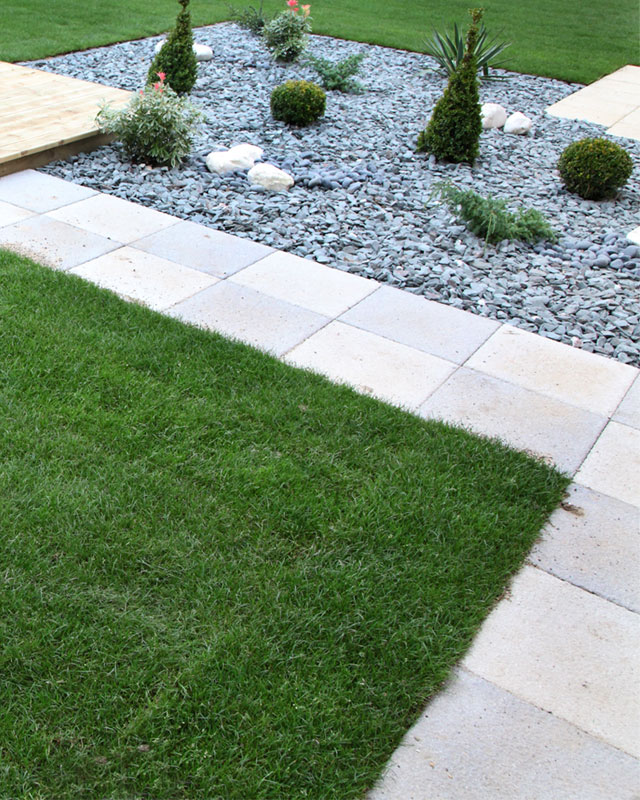

Need more advice or have special needs? Feel free to contact your local BMR dealer.
